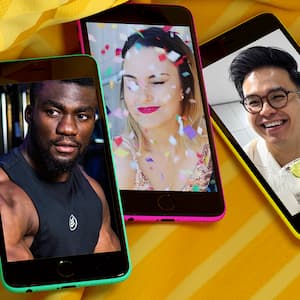“She was like a panther compared to me,” tennis legend Billie Jean King of the shy, young Indigenous country girl who had just bested her in a final.
The girl was Evonne Goolagong – and she would become a sporting legend herself.
Dubbed the “Sunshine Supergirl” by adoring Wimbledon fans, this young Wiradjuri prodigy in the white tennis frock would go on to win Wimbledon twice, the Australian Open four times, and the French Open once, among other triumphs.
Her graceful style was compared to ballet, hypnotising audiences and opponents alike. “I started watching her,” King would later recall, “and then I’d remember all of a sudden that I had to hit the ball.” Born on July 31, 1951 in the tiny country town of Barellan, NSW, the third of shearer Kenneth and Linda Goolagong’s eight children, Goolagong had a poor but happy rural childhood – although with the Stolen Generation in full swing.
Born on July 31, 1951 in the tiny country town of Barellan, NSW, the third of shearer Kenneth and Linda Goolagong’s eight children, Goolagong had a poor but happy rural childhood – although with the Stolen Generation in full swing.

Evonne Goolagong lifts the trophy after beating Margaret Court in straight sets (Photo by S&G/PA Images via Getty Images) Source: Press Association
Goolagong’s first racquet was made from a wood fruit box that resembled a paddle, and she would spend hours hitting a ball against a water tank. As a youngster, she would further hone her lightning-quick reflexes as a ballgirl at the Barellan War Memorial Tennis Club before being headhunted by Vic Edwards, who was then one of Australia's best known tennis coaches.
It marked the start of a dramatic rise. At age 14, she moved to Sydney, living with Edwards and his family. Despite battling racism, shyness and homesickness, she would become one of Australia's top tennis players, turning professional in 1971 and promptly beating Helen Gourlay in that year's French Open with a startlingly casual game Martina Navratilova would later describe as not so much serve-and-volley but “saunter-and-volley.”
She would then make further history that year after defeating fellow Australian Margaret Smith Court in the first of her two Wimbledon finals. Black and white footage of the win has been brought to life in SBS documentary series , in which audiences can see curated archival footage that has been restored and colourised.
As an Indigenous player in a predominantly white, upper-class sport, all eyes were on Goolagong.
However, like many athletes of colour at the time, Goolagong preferred to let her sporting achievements do her talking. In 1972, her neutrality sparked controversy when she agreed to play in a segregated South Africa tennis tournament. Her response to critics was this: "Of course I'm proud of my race, but I don't want to be thinking about it all the time." At the time, she , she was weary about never hearing her name mentioned without the preface of “Aboriginal girl…”.
At the time, she , she was weary about never hearing her name mentioned without the preface of “Aboriginal girl…”.

As an Indigenous player in predominantly white, upper-class sport, all eyes were on Evonne Goolagong. Source: Press Association
But in 1991, after two decades living in the United States, she and her family returned to Australia – and it proved a profound homecoming. As , “I never knew what it really meant to be an Aborigine. Then two Aborigine elders invited me to participate in a ceremony, one where you looked deep into yourself. It was the first time I felt truly home."
Since then, Goolagong has become a leading advocate for Indigenous rights. In 2012, she established the Evonne Goolagong Foundation aimed at attracting Indigenous children to tennis, and in the Australia Day Awards of 2018, she was awarded Australia's highest honour for her efforts. For the shy country girl, it’s been an incredible journey.
Experience Australia’s story brought vividly to life with the 4-part series Australia in Colour. Available anytime, anywhere on your favourite device after broadcast on SBS On Demand.



